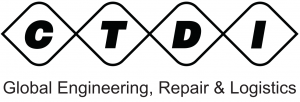First free electric buses in Prague have reached 10 thousand kilometres and 150 thousand passengers
27.04.2016Company: PASSERINVEST GROUP, a.s.
The two new electric buses from the Czech manufacturer SOR, which have already been driving their regular BB1 and BB2 routes connecting the BB Centrum complex in Prague 4 and the Budějovická metro station on the C line for more than 2 months, have travelled more than 10 thousand kilometres. Approximately 150 thousand passengers have used their services. They are the first electric buses to be put into service in the Prague mass transit system that passengers can use free of charge. The project is a joint initiative of the development and investment company PASSERINVEST GROUP, the ČEZ Group and the ARRIVA transportation company and it aims to decreased the burden on the environment, particularly in cities.
The pair of Czech SOR EBN 9.5 electric buses serving the public free of charge on the BB1 and BB2 routes between the Budějovická metro station and the multifunctional BB Centrum in Prague 4 currently have a total of 10 008 kilometres travelled under their belts. Each of the vehicles travels an average of 100 km a day, thus managing to get in about 50 journeys. The electric buses can hold up to 73 passengers and both vehicles transport approximately 3600 people per day.
The electric buses heading to BB Centrum have two permanent drivers assigned to them and another two are trained to drive them in the event of illness, holidays, etc. One of the “core” drivers of the ARRIVA electric buses that gets behind the wheel every day is Stanislav Kovářík. If it was up to him, the diesel buses would never come back: “It is a huge difference for the driver and the passengers. Inside you don’t hear anything nor do you feel the typical vibrations from the motor; it took a bit of getting used to. The passengers sometimes react by saying, we didn’t even hear you drive up,” he laughed. “The routes heading to BB Centrum are ideal for electric buses, the battery capacity is just right for one working day. In the morning I take the bus from the garage recharged to 100% and in the evening I return it with about 30%, so there is a bit of leeway there.”
The electric buses’ environmental friendliness and its low noise levels are of particular importance. In practice they are even quieter than trolley buses, because there is no sound from the tracks. When braking or driving downhill the electric bus, which has an output of 120 kW, 120 kW recovers energy, which it uses to recharge its own battery. The recently-ended winter confirmed the easy handling of electric buses on snow or ice, aided by the weight of the heavy batteries on the back axle. In the winter it is also not necessary to cool the battery space, which heats up in higher temperatures.
Do you know that…
- the batteries with 180 lithium-ion cells have a total capacity of 172 kWh, which corresponds to the average daily consumption of 25 Czech households?
- last year it took the Temelín nuclear power plan less than half a second to charge the batteries of one electric bus to full capacity?
- after a full day of operations the electric buses from the Budějovická – BB Centrum routes once again have full batteries (when recharging 3 × 400 V/32 A) in 6 hours?
- if the full capacity of 73 passengers is used, one electric bus is capable of transporting more than 3600 passengers a day?
- thanks to the Wi-Fi connection passengers have downloaded a total of 2.5 GB of data so far in the electric buses?









